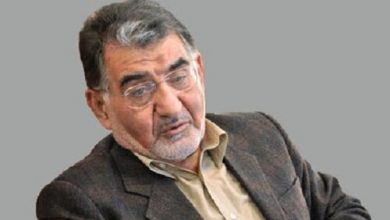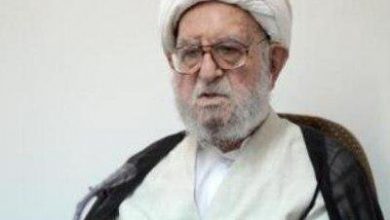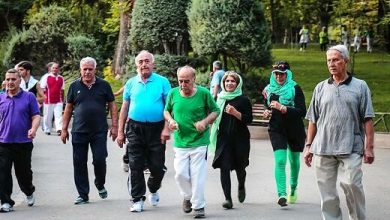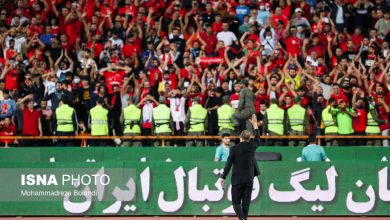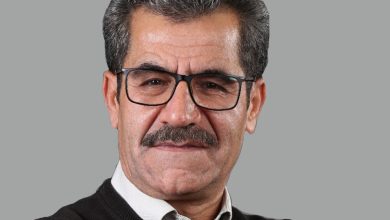Mehdi Nasseri was the editor-in-chief of Kayhan newspaper in the 1970s, and has become a critical figure since 2018. In this report, Mbaran Plus discussed the path of change for this former journalist.
IsnablesHe said: “If we look at the issue from a religious and realistic point of view and outside the control of contemporary celebrities, we will find that our most important problem with regard to women’s issues is the dominance of Western ideas over the mentality of society and a wide range of religious people and even Islamic thinkers at times. The creation of space in the modern world and continuous progress Westerners in the issue of women and the issues surrounding them made us unconsciously and gradually distance ourselves from the Qur’anic and narrative teachings in this regard, and in some cases we began to interpret verses and hadiths and interpret them in an illegitimate way, to overcome the problem of adapting religion to the requirements and needs of the age and to respond to Today’s questions and not to be retarded!
These few lines that I have read are an introduction to the book “Women’s Social Status from the Perspective of Islam” written by Mehdi Nasseri, a well-known figure in the world of media and politics. He was born in 1942 in Damghan and began his Hawza studies in the same Damghan with his father who studied in the Najaf Hawza and Mujtahid. In 1958, Nasiri migrated to Qom to continue his studies and until the mid-1960s, in addition to studying in the Qom Practical School, he studied literature and logic at the Resalat Hawza (the Resalat School was founded in 1954 by Ayatollah Al-Khoei and was one of the Alamia schools that the city is famous for Qom).
After the Islamic Revolution and obtaining his diploma, Nasiri was finally admitted to the Department of Theology at the University of Tehran. In the same years, that is, in the year 1967, “Seyyed Muhammad Asgari”, the temporary supervisor of the “Kayhan” newspaper, with the approval of “Seyyed Muhammad Khatami”, the representative of Imam Khomeini at the time (Sayyid Muhammad Khatami), was assigned the editor-in-chief of this newspaper in the same years, that is, in 1967. RA) at Kayhan Institute. Before that and until 1965, Nasiri was still active in Qom. Nasseri withdraws from studying at the University of Tehran because he was assigned the editorial responsibility of Kayhan newspaper.
Nasiri in the seventies
About becoming a journalist, he said, “Its roots probably go back to school and primary school, when I loved essay lessons and usually got the highest grade in the class; In the midst of political developments as a teenager.After the victory of the revolution, in the Damghan Islamic Culture Publishing House, which has a large library and besides having other cultural activities such as publishing non-professional publications, I published a pamphlet criticizing the current of Emmett and Mr. Peyman., which was my first experience. In non-professional journalism.At the same time, I have been following some newspapers and magazines, among them Kayhan newspaper and Payam Al-Khipal magazine.
About one to two years after he assumed editorial responsibility in Kayhan newspaper, courses outside the jurisprudence of Ayatollah Khamenei begin, and Nasiri also participates in those lessons. From 1969 to 1973, he was an active participant in courses outside the jurisprudence of Ayatollah Khamenei. He is.
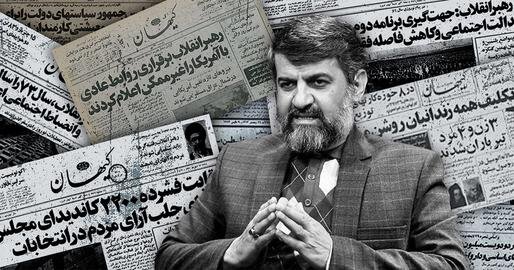
He also tells the story of his entry into Kayhan in the following way: “With the martyr Shah Shiraghi – one of the most prominent students of the Haqqani School and the representative of the people of Damghan in the first and second sessions of the Islamic Council – who was appointed by Sayyid Muhammad Khatami as the representative of the Imam in the Kayhan Institute from 1961, he was appointed as the head of this institution And I had a friendship and a special relationship, and he offered cooperation with the Kayhan Institute and the Zan Rose magazine, which I did not accept because of my continuing studies in Qom but because of the constant communication with him during the developments in the Kayhan Institute.During these days in Qom, I was in contact with the late Muhammad Javad Suhaibi , who launched the bimonthly magazine “Kihan Andish” in Qom on Shahsherghi’s suggestion, until March 1964, Mr. Shahsharghi was martyred with a group of parliamentarians who were heading to the front and their plane was hit by a missile by the Iraqi army and crashed.
Kayhan published a special message for his 40th birthday, in which an article from me was also published. After that, I continued writing articles and sending them to Kayhan until the middle of 1965, at the suggestion of Mr. Suhaibi and by order of Mr. Ebrahim Asgharzadeh, who was the deputy of the cultural authority of Mr. Seyyed Mohammad Asgari (his successor). Shah Chiraghi by order of Mr. Khatami and with the approval of Imam Khomeini). I was appointed as the representative of the Kayhan Institute in Qom Madrasah. My duty in this position was to communicate with writers and clerical figures to produce articles and interviews for Kayhan Institute publications, especially Kayhan Newspaper. Of course, at the same time, I was also studying in the field, which was at the end of the level course. A year later in 1966, at the suggestion of Mr. Seyyed Mohammad Asgari, I was invited to work with Kayhan newspaper in Tehran, and I went to Tehran and started my job as a secretary for the articles service.
Mehdi Nasiri had published during these days a series of articles on issues of the imam’s fatwa in criticizing the writings of Ayatollah Azari Qomi and the positions of the “Etisalat” newspaper in the world, which, according to him, was well received. These articles were published in the same year in book form for the Muslim Teachers Association.
“Sabah” weekly newspaper and its fate
In 1970, by order of the leadership, Nasiri was appointed as the president of Kayhan Institute and remained in the same position until 1974. Finally in mid-1974 he resigned from his position at Kayhan newspaper. In the same year, Mehdi Nasiri independently founded the Morning Magazine and worked in it until 1979. In all the years of his media activity, he was attributed to the political leaning of the religious and religious left, however, Nasiri still presented himself as an opponent of religious extremists.
One of the important events in Subh Mahdi Nasseri magazine was the publication of two reports on financial corruption in the Ministry of Post and Telegraph and the Ministry of Energy in the government of Hashemi Rafsanjani. He also explains his purpose for establishing the weekly Al-Sabah newspaper as follows: “After 7 years as editor and director of Kayhan newspaper, I felt tired of the daily journalistic work and wanted to follow the press on a weekly or monthly basis, and of course in this direction I became more interested in theoretical topics. That is why I went to Al-Sabah. Al-Sabah, she followed the line of seeking justice and fighting economic corruption along with political, cultural and theoretical issues.
In an interview with the Islamic Republic of Iran News Agency (IRNA) about the closure of the weekly “Sobh” newspaper, Nasiri explained that “during the publication of documentary and investigative reports about legal violations and economic corruption in relation to the two ministries of Hashemi Rafsanjani’s government (the Ministry of Communications and Energy), despite their accuracy, validity and citation of reports, they did not Seeing any useful and constructive reaction from responsible institutions and organizations, I came to the conclusion that publishing these materials is not in the interest of the state and only leads to discrediting corruption and violating human rights law. Here one of the most important philosophies of the morning edition slipped into my mind. Of course I must It is worth noting here that the violations of these two ministries were really insignificant compared to the terrible corruption that occurred in the past two decades.In the field of cultural issues and discussions, I came to the conclusion that theoretical and theoretical work must be done in order to chart a better future for Iran and the Islamic Republic. Due to these two factors and some others such as the financial pressure of continuing to work, I took the morning off and went back to the field.”
Nasiri and his positions in Kahan and other media
During his active years in Kayhan, Nasiri also issued an almost controversial editorial titled “The Plague of Islamic Society: Social Violence and Economic Mercy” in which he addressed the issue of harsh treatment of people in the early 1970s. As Nasiri himself says, he was never with the protests against Shell Hijabi in those years and says: “During the Kahan era, I never supported the movements and demonstrations against Shell Hijabi, and when there was a big demonstration against Shell Hijabi in 1969, all the newspapers and media covered Widespread, and once again Kayhan refused to cover this news on the front page, when I came across Mr. Khatami’s letter of protest as a representative of the leadership.
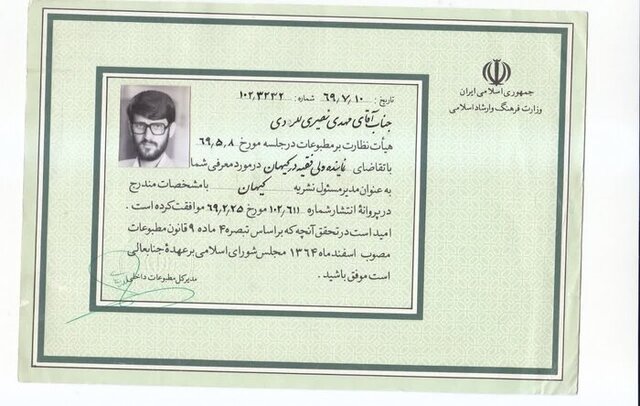
But the remarkable thing about reviewing his old positions is that the writings of Mehdi Nasseri are almost out of reach from the archives of some media outlets in which he was active. This means that understanding his change of attitude and understanding of Mehdi Nasseri in the 1970s and Nasseri today is not easily possible because the last remaining note from his archive of notes on newspaper websites is linked to a note in 2017 for Resalat newspaper titled “The Lie”. the ’60s and the libertarian of the ’90s; In this note, he discussed Kayhan newspaper and its position against the Telegram candidate, and made statements accusing the Islamic Republic newspaper of being fake media in the 1960s. In this memorandum, Nasiri mentioned: “Also, the liberal and pro-openness media newspaper Jamuri should be reminded, with the respected editor-in-chief of the same years, that in the 1960s, the Islamic Jamhour newspaper was known as the Islamic Press Association; that is, it is like Islamic associations with low capabilities For some departments in the government of Mr. Engineer Mousavi, he played the role of an auditor and a liar so that no one would be mistaken in the press, and this lie continued until the early seventies, and one of his cases was in an article addressing Shahid Avini, the editor-in-chief of Surat magazine (four months before his martyrdom) for publishing a story, He wrote: Mr. Editor, think of God too! In this article, he also criticized the politics of the artistic field under the management of Mr. Zam (who may now be friends with Jumoori due to his son’s active role in Telegram). Nasiri was in his place at Al-Mashreq newspaper all these years.
Nasiri in the eighties
Nasiri was also appointed as the political deputy of the policy-making council of Friday imams across the country in 1380 to 1384. After the end of his tenure as political deputy of the imams’ policy council, he became the cultural deputy of the leader of the Islamic Republic in the United Arab Emirates and remained in the UAE until 2008. While in the United Arab Emirates, he holds a master’s degree in private law from Payam Noor University. After his return to Iran, Mehdi Nasseri returned to Qom and attended the lessons of Ayatollah Vahid Khorasani.
Nasiri change process
He knows the process of changing politicians’ opinions in the course of work experiences and further studies and conversations and says he has ruled out the possibility of realizing a religious utopia. He also understood the issue of controlling modernity, and reached the jurisprudential and theological issues of the Herat era. Next, pay attention to the importance of people’s freedom of choice in matters of religion and religious governance and the illegality of any imposition, in addition to some other factors, including the objective and practical failures of the recent Islamic Republic. Four decades he considers effective in his current political views. He says, “My regret is a kind of regret for all the political, religious and revolutionary personalities and elements that emerged gradually and with the passage of time since the beginning of the revolution due to the lack of sufficient knowledge and experience as well as the lack of a comprehensive understanding of the subject of governance and the requirements of the era underwent a transformation in thought and practice. I have always been an independent thinker and avoided being considered loyal.” And depending on faction and orientation, but in general, I now agree with many of the positions of reformists compared to those of the closed, stagnant, unpopular, authoritarian broad spectrum of fundamentalists. I feel more sympathetic and like-minded.”
Nasiri believes that the country’s intellectual future and developments in the fields are on the way to excellence and development. He believes that “the experience of the Islamic Republic has provided the basis for many rethinkings and in-depth intellectual and theoretical perspectives. Many have now come to the conclusion that they must offer a more comprehensive, rational and humane reading of the religion in order to be able to come to terms with modern ideologies and survive the onslaught of Atheism, atheism, and anti-religion Mehdi Nasseri recently had an online discussion with Ali Alizadeh, a political activist based abroad, which also sparked controversy with him; In his recent statements in this discussion, he touched on the imprisonment of Mir Hossein Mousavi, the veil, and the broader issue of immigration Spread, harmful social poles, and make accusations against some.
the end of the letter



